This post may contain affiliate links. Please read our disclosure policy.
These gluten free cinnamon rolls are soft, gooey, and full of cinnamon-sugar flavor—just like the kind you thought you couldn’t have anymore.
The dough is easy to work with, they rise beautifully, and you can even make them ahead.
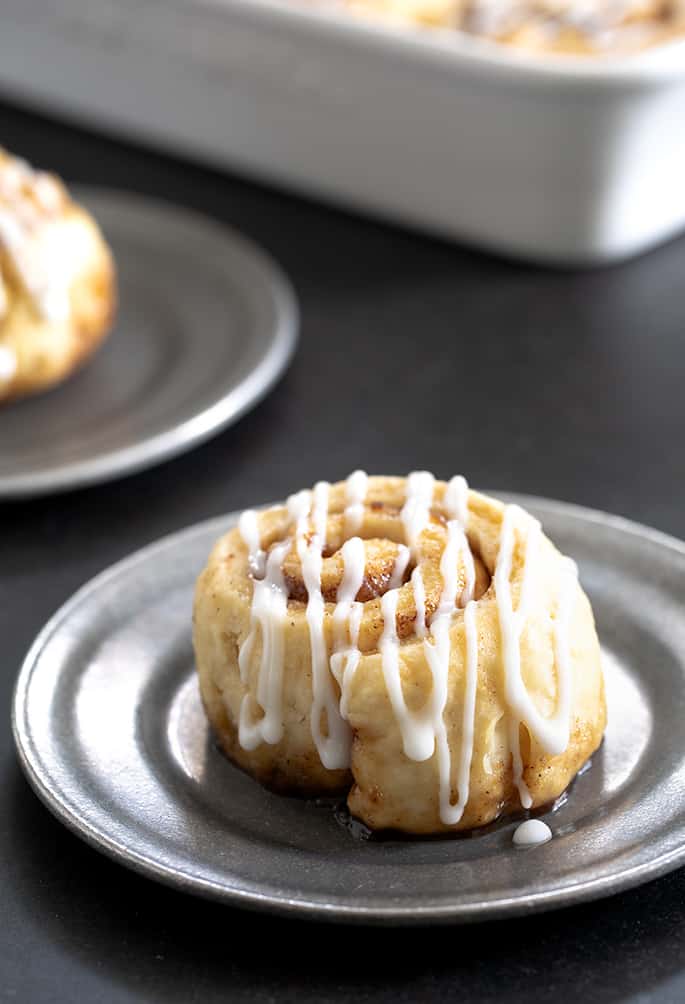
“OMG! These were incredible. Light, fluffy and the perfect sweet I have been missing. Will definitely make these again.”
my take
Why You'll Love These Rolls
Soft and tender: They rise beautifully and have that classic pillowy texture.
Easy to handle: The dough is simple to shape, especially after a quick chill.
Make-ahead friendly: Parbake and freeze so they’re ready when you are.
Balanced sweetness: Just enough sugar to satisfy without overpowering the cinnamon.
Tastes like the original: No one will guess they’re made without gluten.
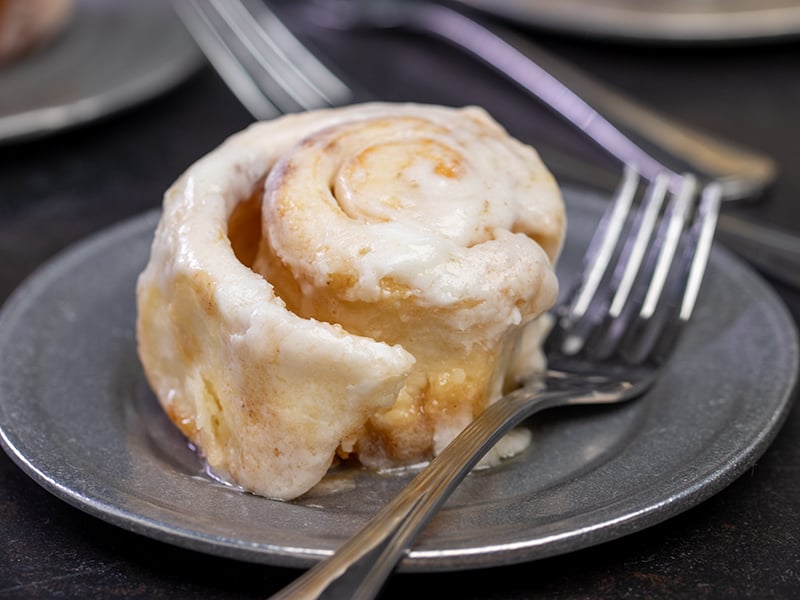
Recipe ingredients
Below I break up the ingredients to make these gluten free cinnamon rolls into different parts of the recipe.
For the rolls
- Gluten free flour blend: Use one of my recommended gluten free flour blends. Add xanthan gum only if your mix doesn’t include it.
- Tapioca starch: Adds extra stretch and softness.
- Milk powder: Adds richness and helps with browning.
- Instant yeast: For rise and flavor. Active dry yeast also works—see FAQs.
- Cream of tartar + baking soda: Work together to help the rolls rise and brown.
- Brown sugar + salt: For balanced flavor and tenderness.
- Apple cider vinegar: Adds a slight tang and helps with lift.
- Butter + egg + milk: Enrich the dough and keep it soft. Use full-fat milk.
For the filling
- Butter: Softened so it spreads easily.
- Brown sugar + cinnamon: Classic flavor and gooey center.
For the optional glaze or frosting
- Confectioners’ sugar + milk: For a simple pourable glaze.
- Butter + heavy cream: For a thicker, rich frosting. Use at room temp for best texture.
How to make gluten free cinnamon rolls
Follow along with my directions below to see how to make gluten free cinnamon rolls in your own kitchen.
Make the dough
Whisk together the dry ingredients, then mix in the wet. Beat the dough in a stand mixer until smooth and pulling away from the sides. Chill it for 30 minutes so it’s easier to handle.
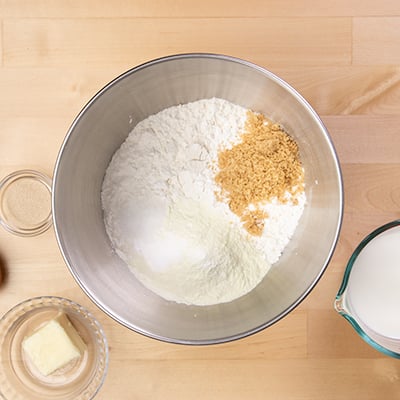
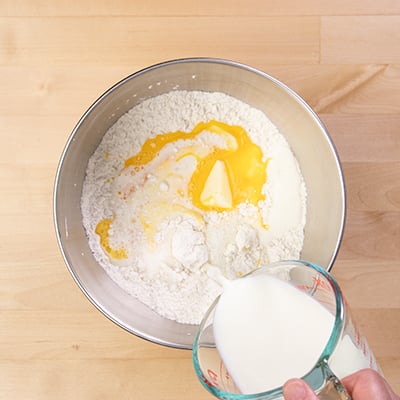
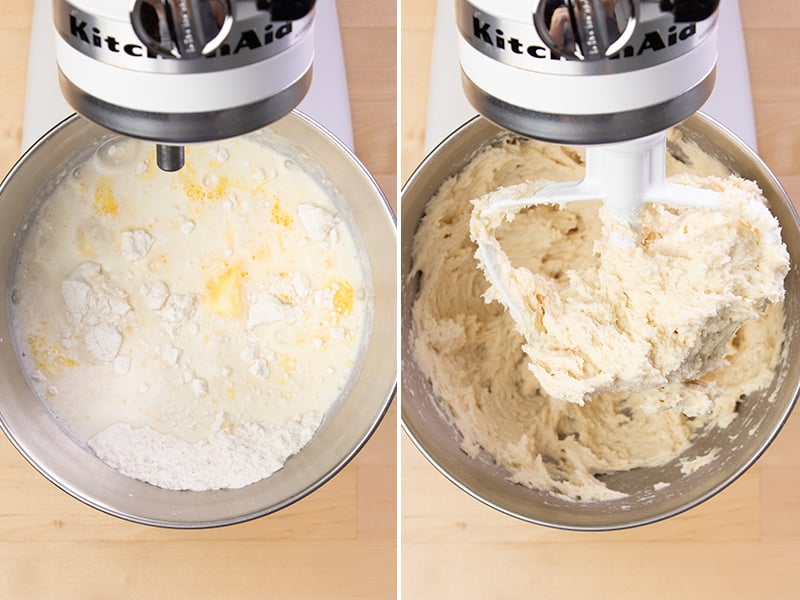
Roll it out
Divide the dough in half. Roll each half into a 9×12-inch rectangle about ½-inch thick on a lightly floured surface.
Add the filling
Spread with softened butter, then sprinkle with brown sugar and cinnamon. Pat the filling down gently to help it stick.
Shape the rolls
Roll the dough tightly from a short side into a coil. Slice into 6 even pieces using dental floss or a very sharp knife. Repeat with the other half.
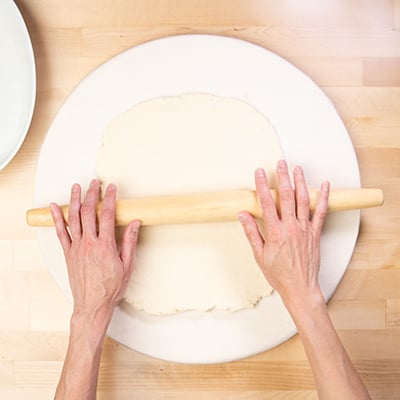
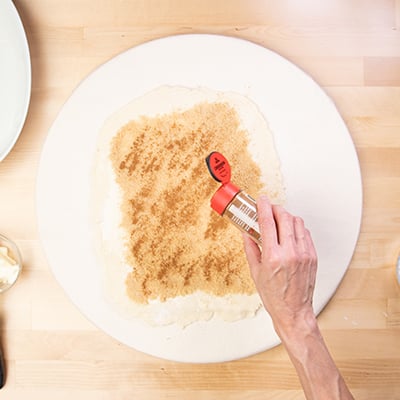

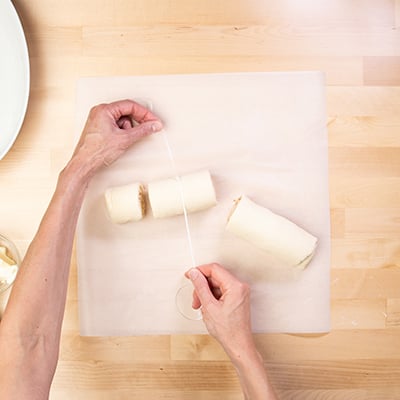
Let them rise
Place the rolls cut side up in a greased baking dish, cover, and let rise until puffy—about 50% larger, not doubled.
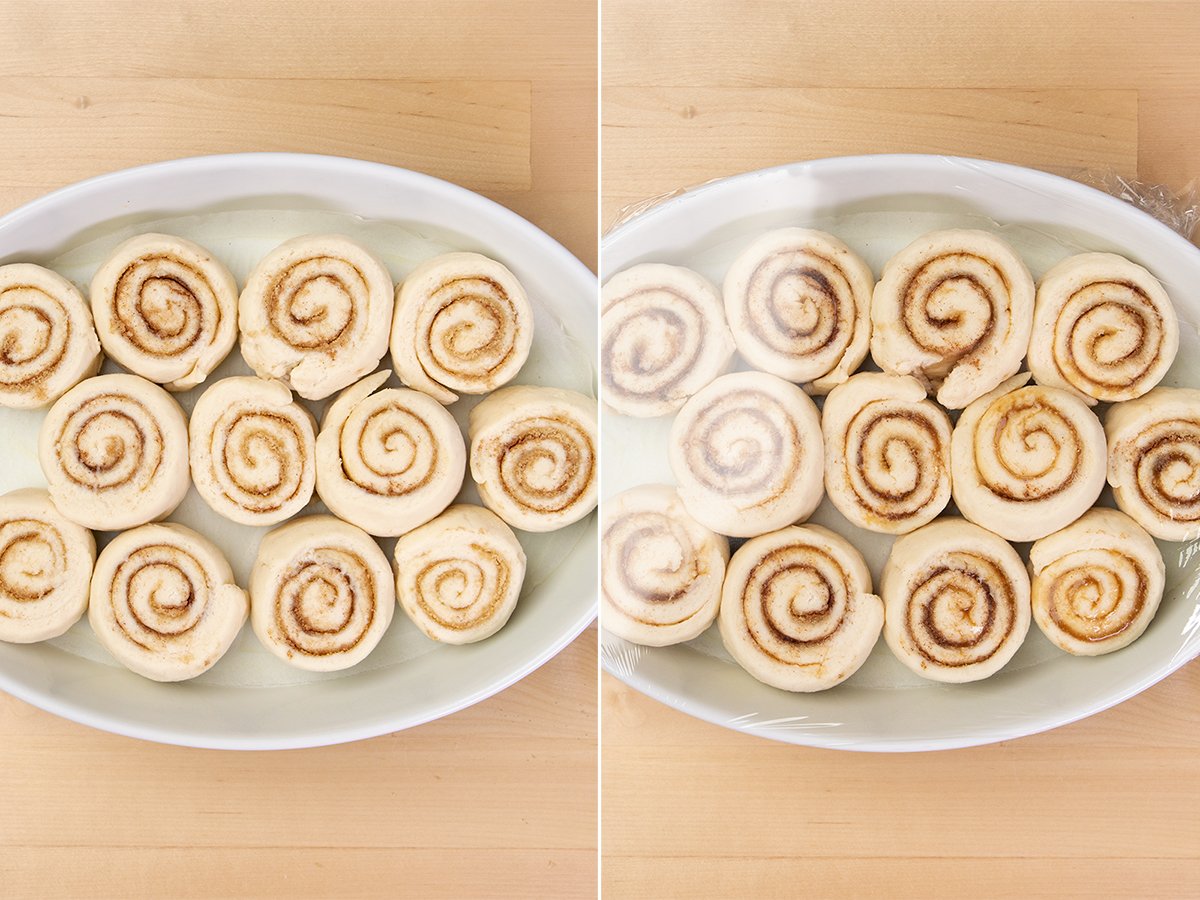
Bake and frost
Bake at 350°F until risen and lightly golden. While still warm, top with glaze or frosting, if using.
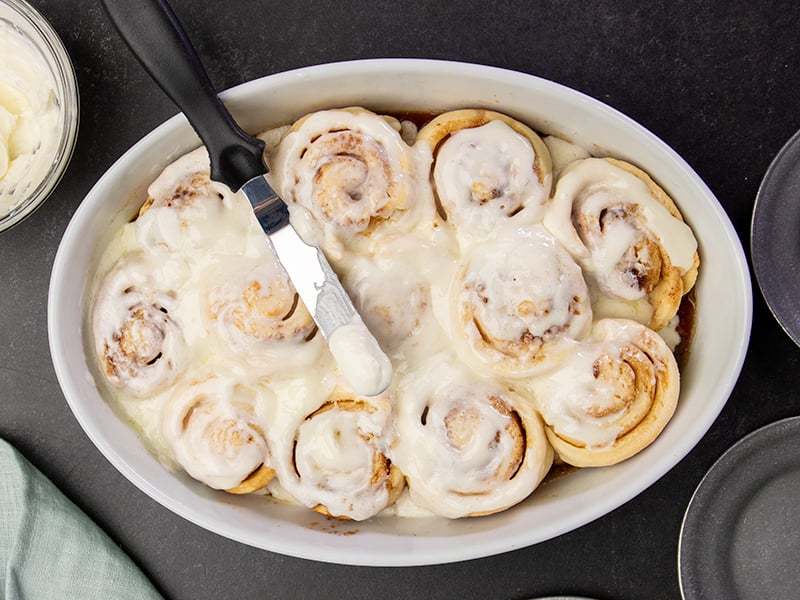
My Pro Tip
Expert tips
Chill the dough before shaping: Cold dough is easier to handle and less likely to absorb too much flour, which can lead to dense rolls.
Don’t let them overproof: They should rise to about 50% bigger—not double. Overproofed rolls lose structure and bake up flat.
Roll evenly and not too thin: A ½-inch thickness gives the best swirl without tearing the dough or losing filling.
Use dental floss to cut cleanly: It slices without compressing the rolls. If using a knife, saw gently with a very sharp blade.
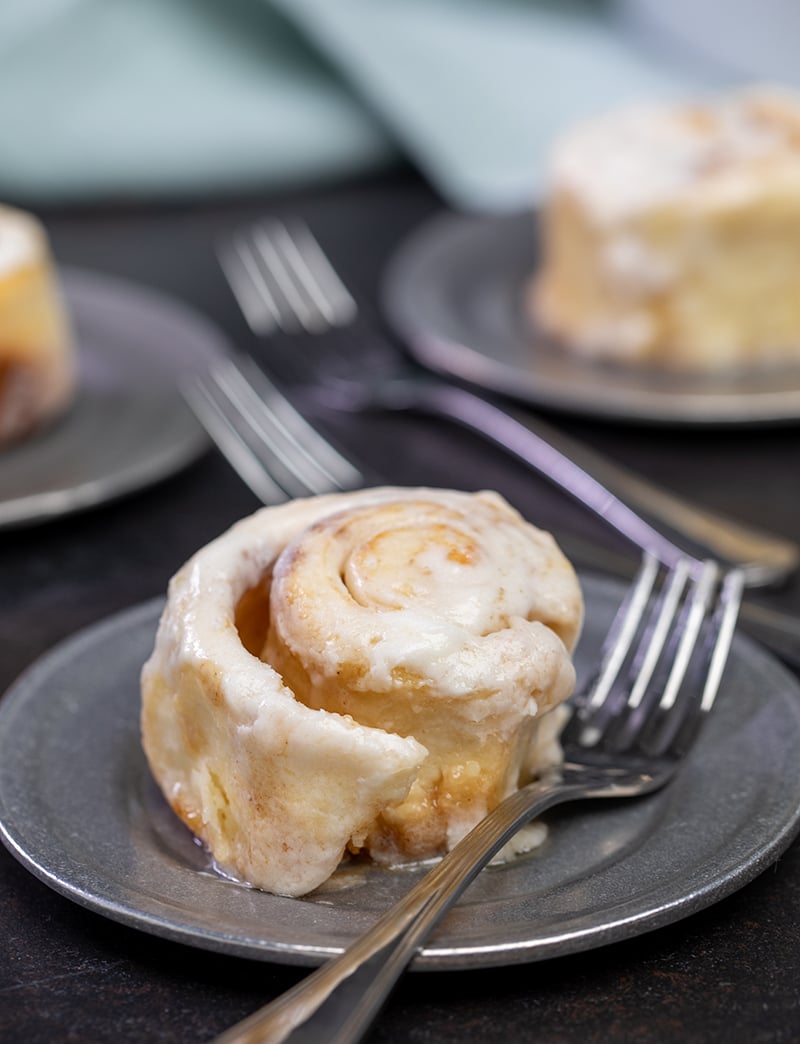
substitutions
Ingredient substitutions
Dairy-free: Use powdered coconut milk in place of milk powder. Substitute vegan butter for dairy butter, and choose a nondairy milk with fat (like almond milk, not fat-free).
Egg-free: Replace the egg with a chia egg (1 tablespoon ground white chia seeds + 1 tablespoon lukewarm water, mixed and gelled).
No apple cider vinegar or cream of tartar: Use white wine vinegar instead of apple cider vinegar, and lemon juice (½ teaspoon) in place of cream of tartar.
make ahead tip
Parbake and freeze
To make fresh cinnamon rolls in the morning without overproofing:
- Shape the rolls and let them rise as usual.
- Bake at 300°F for 15 minutes—until puffed but very pale.
- Let cool completely, then wrap tightly and freeze.
- When ready to serve, defrost at room temp.
- Bake at 350°F for about 10 minutes, until browned and bubbling.
Gluten Free Cinnamon Roll Recipe
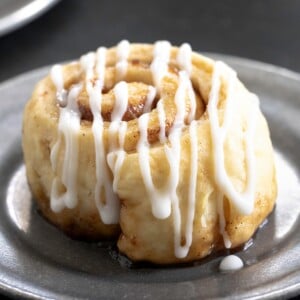
Equipment
- Stand mixer with paddle attachment
Ingredients
For the rolls
- 3 cups (420 g) all purpose gluten free flour blend, (See Recipe Notes), plus more for sprinkling
- 2 teaspoons xanthan gum, omit if your blend already contains it
- ¼ cup (36) tapioca starch/flour
- ½ cup (43 g) dry milk powder, or buttermilk powder; make sure it's powder, not liquid!
- 3 teaspoons (6 g) instant yeast
- ¼ teaspoon cream of tartar
- ¼ teaspoon baking soda
- 2 tablespoons (26 g) packed light brown sugar
- 1 teaspoon kosher salt
- 1 teaspoon apple cider vinegar
- 4 tablespoons (56 g) unsalted butter, at room temperature
- 1 (50 g (weighed out of shell)) egg, at room temperature, beaten
- 1 ¼ cups (10 ounces) warm milk, about 95°F (plus a bit more, only as necessary)
For the filling
- 4 tablespoons (56 g) unsalted butter, at room temperature
- ¾ cup (164 g) packed light brown sugar
- 1 teaspoon ground cinnamon
For an optional glaze
- 1 cup (115 g) confectioners' sugar, sifted
- 1 tablespoon milk, any kind, plus more by the 1/4 teaspoonful
For an optional frosting
- 6 tablespoons (84 g) unsalted butter, at room temperature
- 2 cups (230 g) confectioners' sugar, sifted
- 3 tablespoons heavy whipping cream, at room temperature, plus more as necessary
Instructions
- Grease a 9-inch x 13-inch casserole dish and set it aside.
Make the dough
- In the bowl of a stand mixer fitted with the paddle, whisk together the flour, xanthan gum, tapioca starch, milk powder, yeast, cream of tartar, baking soda, and sugar. Add the salt and whisk again.
- Add the vinegar, butter, egg, and milk, and mix to combine.
- Increase the mixer speed to high and beat for about 3 minutes, until the dough is smooth and pulling away from the sides.
- Transfer the dough to a sealed container and refrigerate for 30 minutes to make it easier to handle.
Roll out the dough
- Turn the chilled dough onto a lightly floured surface and knead gently to smooth.
- Divide in half, keeping one half covered. Roll the other into a 9×12-inch rectangle about ½ inch thick, dusting with flour as needed.
Add the filling and shape
- Spread half the softened butter over the dough, leaving a 1-inch border. Sprinkle with half the brown sugar, pat it down, then sprinkle with cinnamon.
- Starting from a short side, roll the dough tightly into a coil. Slice into 6 rolls using floss or a sharp knife.
- Place in a greased 9×13-inch pan, 1 inch apart. Press each roll down about ⅓ of the way to flatten slightly.
- Repeat with the second half of the dough and filling.
Let rise
- Cover the pan with lightly oiled plastic wrap. Let rise in a warm spot until the rolls are about 50% larger—about 45 minutes.
Bake
- Preheat oven to 350°F.
- Remove plastic wrap and bake for 20 minutes, until risen, lightly golden, and baked through.
- Let cool for 5 to 10 minutes before icing or frosting, but no longer.
Optional glaze.
- Whisk together confectioners’ sugar and milk until thick but pourable. Add more milk ¼ teaspoon at a time if needed.
- Drizzle over warm rolls.
Optional frosting
- Beat butter and confectioners’ sugar until smooth. Add cream gradually to reach a spreadable consistency.
- Spread generously over warm rolls.
Video
Notes
Nutrition
Nutrition information is automatically calculated, so should only be used as an approximation.
leftovers
Storage instructions
Let the rolls cool completely before storing. Wrap tightly and freeze in a single layer before adding glaze.
To reheat, defrost at room temp, sprinkle with a bit of water, and warm in a 275°F oven until soft and heated through.
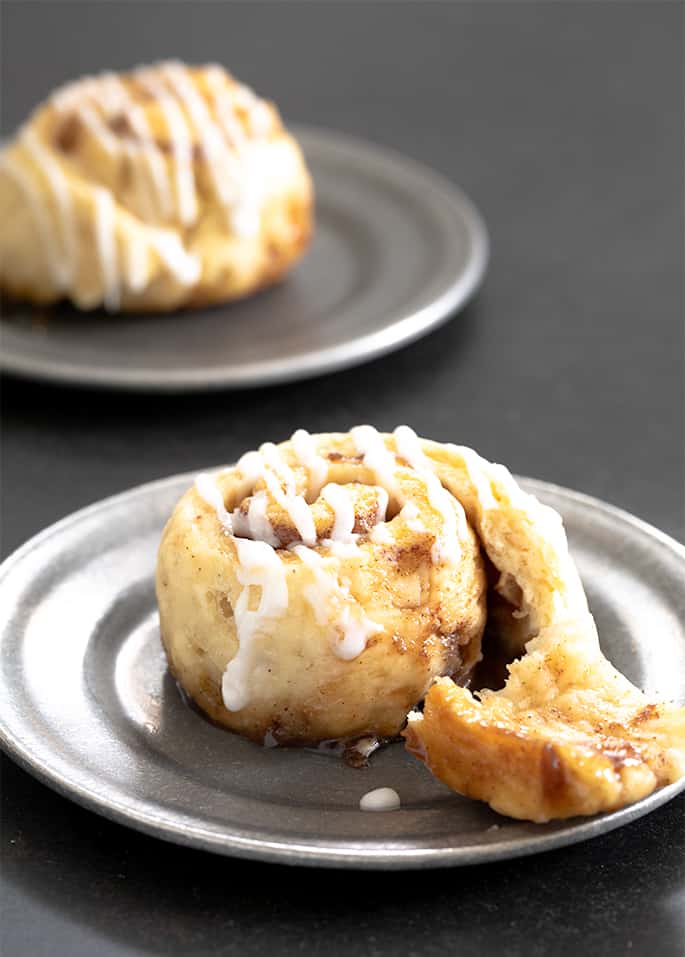
FAQs
Be patient. Gluten free yeast dough takes time to rise and usually won’t double. If they seem stalled, the environment may be too cold.
Most likely causes: too much flour during shaping or not enough proofing time. Make sure to let the dough rise until noticeably puffy.
Check that you used the correct flour blend, measured by weight, and used dry milk powder—not liquid. Sticky dough often means it’s overhydrated.
They may have overbaked, or the flour blend may have absorbed too much moisture. Avoid adding extra flour while shaping.
Yes. Use 25% more (about 8g total) and dissolve it in some of the milk before adding it to the dough.


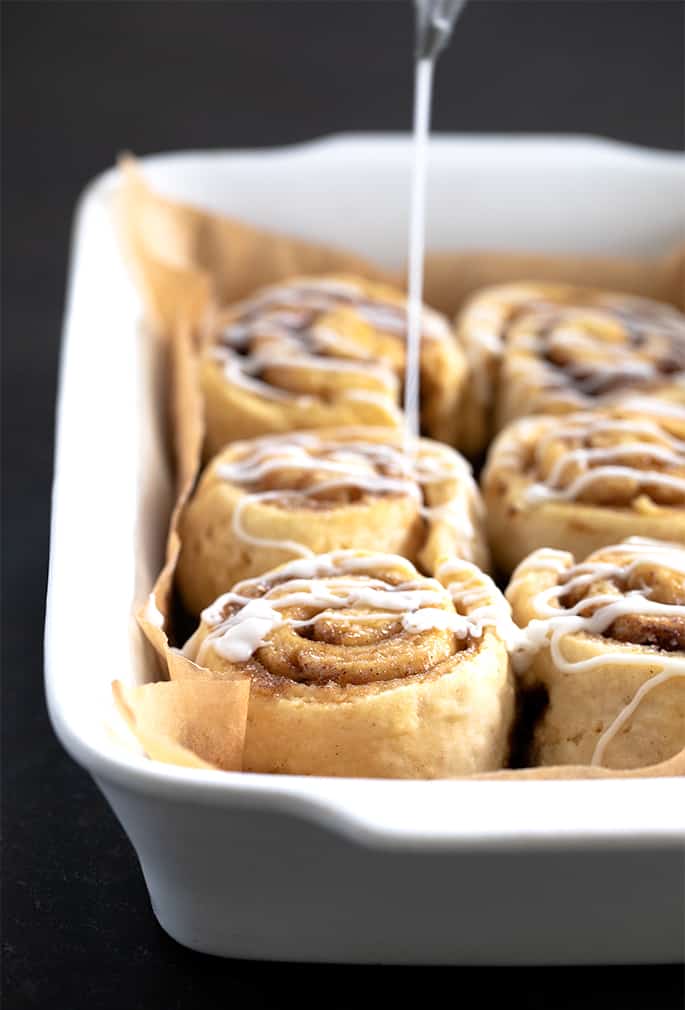
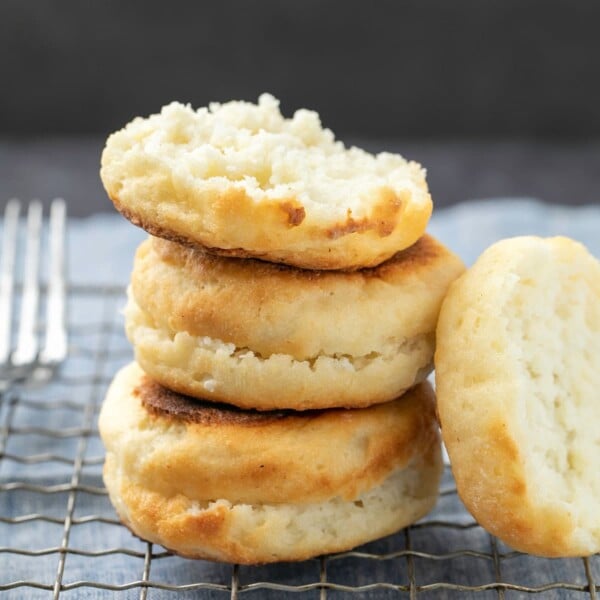

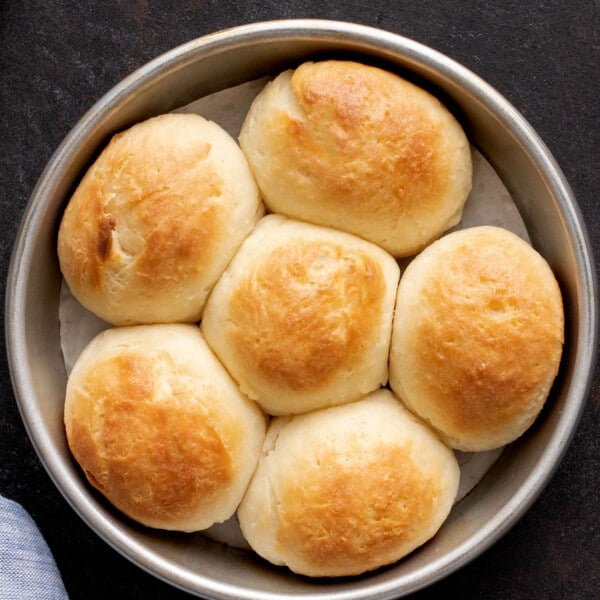
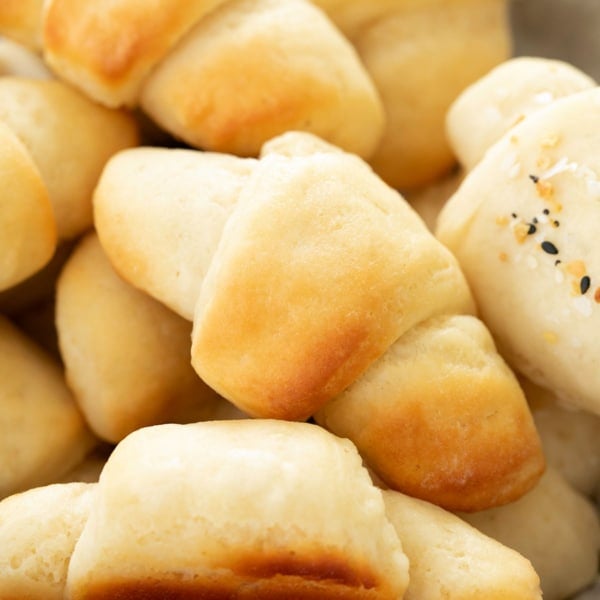









Could I refrigerate the cinnamon rolls overnight and then bake in the morning for fresh rolls or would they over proof in the fridge? Excited to try these for Christmas morning! I haven’t had a cinnamon roll in years!
I’m afraid I don’t recommend that, no, Alicia, since they will overproof and then fall as they cool.
Hi Nicole. Would you have any tips for baking gluten free with the Ankarsrum assistant?
Your input will be greatly appreciated.
I have been a fan of your recipes for years. Thank you for all of them!
Hi, Ruthe, I had never heard of that mixer (I had to google it to see what it even was!), so I honestly don’t know. If it has a paddle attachment that looks and behaves like the KitchenAid stand mixer, then it should work. Thank you for the kind words!
Can I make this without the egg?
Please see the text of the post under “Ingredient substitutions,” “Egg-free” for my suggestions, Emma.
I made your cinnamon rolls, and they were awesome! The best GF ones of any that I’ve attempted, so THANK YOU for your expertise and recipe. My question today is if you have ever tried the recipe using Authentic Foods gluten free “Steve’s Bread Flour” for these? I happen to have a couple bags of this flour on hand, and have heard it is very finely ground and good quality. My celiac hubby is asking for another batch of your cinnamon rolls, and I’d like to use up my bread flour on hand, if possible. Thanks so much for any advice or input. And thanks again for all of your gluten free labor of love (and food!) Grandma
Hi, there, Grandma to 4, you’re very welcome! I’m so glad you enjoyed the cinnamon rolls so much! I’m afraid that I’ve never tried that blend. I have heard good things about it, but I would stick to a recipe created to be used with that blend in particular to use it up, since I wouldn’t want you to waste ingredients.
Can I add apple pie filling to these?
Hi, Traci, I don’t recommend that, no, since I have to imagine something that’s that substantial would leak out during baking. You could instead make these mini apple pie pockets.
This is a lovely dough to work with. I made crescent rolls just now and they are amazing. So soft & fluffy & delicious. They smell and taste exactly like a Pillsbury Crescent Roll. I make my own flour blend of 44 grams brown rice flour, 44 grams white rice flour, 23 grams potato starch, 23 grams of tapioca flour. I adapted the Mock Better Batter recipe on this site. Yes I know the pectin & potato starch & xanthum gum isn’t in my blend but I don’t keep potato flour & pectin. I’ve used my blend for everything. It makes such a wonderful light fluffy white cake & chocolate cake, cookies. I use my blend for everything & I do a lot of baking. I’ve had no issues with my blend & I can make 3lbs for $15.
Looking forward to trying this recipe! Have you tested Walmarts Great Value brand gluten free ap flour? Would you recommend it for this recipe?
Hi, Mandi, I’m afraid I haven’t tried that blend, no, so I can’t say whether or not it will work. Yeast bread is the trickiest type of recipe, and shaped yeast bread even trickier, so I’d hesitate to try this recipe with a flour blend that may not be up to the task.